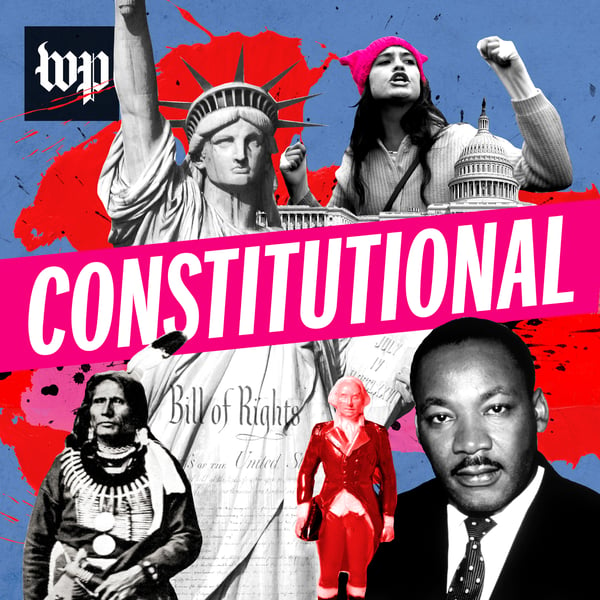Ancestry
Constitutional
The Washington Post
4.8 • 2.5K Ratings
🗓️ 7 August 2017
⏱️ 41 minutes
🧾️ Download transcript
Summary
Transcript
Click on a timestamp to play from that location
| 0:00.0 | It's nearly a hundred years after the Constitutional Convention, and we're out on the barren plains. |
| 0:19.4 | The wind is sweeping across the makeshift shelters of an Indian reservation. |
| 0:25.8 | On Christmas week of 1878, 16-year-old bear shield was dying on the bottom of this army canvas tent. |
| 0:36.2 | Bear shield is a member of the Ponka Indian tribe, which recently had been forced to turn over their land and move to this government-run reservation here in Oklahoma. |
| 0:46.8 | But before his eyes closed in death, as he lies dying, sickness and realizes that he's not going to live, |
| 0:54.6 | he begged his father the chief. He made his father promise that upon his death, he would take his sons remains and re-bury them in their sacred homeland in the white chalk bluffs overlooking the Missouri River. |
| 1:14.6 | The problem is, the sacred white chalk bluffs were a 600-mile trek north on foot across the frozen landscape of what's now Kansas and Nebraska. |
| 1:28.6 | But after Young Bear shield takes his last breath and dies in the confines of this camp, his father chief standing bear decides he has to make the journey. |
| 1:40.6 | And 29 members of his tribe say they will go as well. |
| 1:44.6 | And so in almost a hasty fashion, they got what they could together and set off on the trip and by no means was it enough. |
| 1:52.6 | He puts his body in the back of a rickety buckboard wagon and with two feeble starving horses, they began walking north. |
| 2:03.6 | It's the second day of January and a fierce blizzard is swirling across the flat earth. |
| 2:11.6 | The day they leave, the temperature is 16 below zero. |
| 2:15.6 | The third day out, the estimated windshield is more than 40 below zero. |
| 2:22.6 | And so here's those 30 people traveling to Nebraska 600 miles in the winter and moccasins and bare feet. |
| 2:31.6 | They say they could see the tracks of blood in the snow from when they were walking. |
| 2:39.6 | And it's in this manner that they go one week, one month, three months, four months until they get within two days of their beloved homeland. |
| 2:51.6 | And then there, so close to their journey's end, severely frostbitten, starved, something happens. |
| 3:01.6 | They're arrested by the United States cavalry for having left the confines of the reservation. |
| 3:09.6 | And this arrest sets off a chain of events, a chain of events that eventually leads to standing bear being the first Native American in the entire United States. |
| 3:20.6 | To get a trial and the chance to argue for his rights. |
| 3:24.6 | He was able to bring the entire government of the United States to its knees without ever firing a shot from his windchester, without ever plucking an arrow from his quiver, without ever un-sheathing his hunting knife. |
... |
Please login to see the full transcript.
Disclaimer: The podcast and artwork embedded on this page are from The Washington Post, and are the property of its owner and not affiliated with or endorsed by Tapesearch.
Generated transcripts are the property of The Washington Post and are distributed freely under the Fair Use doctrine. Transcripts generated by Tapesearch are not guaranteed to be accurate.
Copyright © Tapesearch 2025.

